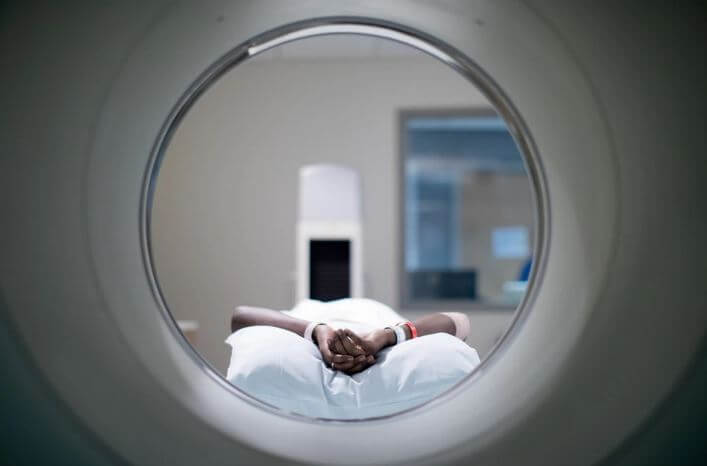
A Fear of Lawsuits Really Does Seem to Result in Extra Medical Tests
Margot Sanger-Katz | The New York Times | July 23, 2018
Doctors are known for complaining about how the malpractice system adds costs. But it has been hard to prove, until now.
Back in 2010, Tom Price, then a congressman, said he knew the chief reason health care cost so much: “Defensive medicine” was costing the United States $650 billion per year — about 26 percent of every dollar spent.
The widely dismissed estimate from Dr. Price, an orthopedic surgeon who went on to become President Trump’s health and human services secretary before resigning last fall, was memorable for its magnitude.
But American doctors often rail against the country’s medical malpractice system, which they say forces them to order unnecessary tests and procedures to protect themselves if a patient sues them. Some prominent health economists, including those at the Congressional Budget Office, have tended to play down such costs, arguing that medical practice is not too warped by fear of lawsuits. But the question has proved difficult to study, since patients nearly everywhere can sue. Without a control group, it’s hard to know how differently doctors might act if they were less worried about liability.
Researchers from Duke and M.I.T. have found a pocket of America that is different, and they now offer what is perhaps the most precise estimate of how much defensive medicine matters, at least for care in the hospital. They found that the possibility of a lawsuit increased the intensity of health care that patients received in the hospital by about 5 percent — and that those patients who got the extra care were no better off.
“There is defensive medicine,” said Jonathan Gruber, a health economist at M.I.T. and an author of the paper, which was published in draft form Monday by the National Bureau of Economic Research. “But that defensive medicine is not explaining a large share of what’s driving U.S. health care costs.”
Mr. Gruber and Michael D. Frakes, a Duke economist and lawyer, looked at the health care system for active-duty members of the military. Under longstanding law, such patients get access to a government health care system but are barred from suing government doctors and hospitals for malpractice. Their family members can also use the military hospitals, but they can sue for malpractice if they wish.
Their study looked at what happened to the hospital care that military members received when a base closing forced them to use their benefits in civilian hospitals, where it was possible to sue. Spending on their health care increased, particularly on extra diagnostic tests.
They also found that, even within the military hospitals, family members who could sue tended to get more tests than those who could not.
Previous research has primarily looked at the effects of smaller legal reforms, like state caps on the awards that malpractice victims can collect in court. Those studies showed some declines in medical spending related to the policies. But they tended to be small, and yearly variation in medical spending made it difficult to be sure how much of the difference was because of the legal change.
“They did a nice job of finding a population of patients who are being treated by doctors who didn’t have any liability,” said Mark McClellan, the director of the Duke-Margolis Center for Health Policy. Dr. McClellan was a top health official in the George W. Bush administration, which pushed for national liability caps.
The paper’s focus on the hospital allowed the researchers to have a lot of precision in their measurements. But it means they didn’t capture all the places where defensive medicine might occur. It’s possible, for example, that liability concerns cause treatment to rise by more than 5 percent for emergency room patients who go home the same day — or not at all in a typical office visit.
Mr. Frakes and Mr. Gruber examined a large number of quality indicators to determine whether the doctors who practiced less intense medicine on their military patients were somehow cutting corners. Each measure differed, and there were some places where harm couldn’t be ruled out, but they found no place where the quality of care in the military hospital appeared to clearly be worse. That finding suggests that, when doctors do extra treatment or testing to avoid liability, they are not necessarily taking extra steps that make their patients any healthier.
“It suggests that physicians change their behavior in response to liability considerations, but they don’t do it in a very calibrated way,” said Michelle Mello, a professor of law and health policy at Stanford, who has studied medical malpractice. “They tend to make a lot of changes that don’t result in better patient care.”
In the federal government and in states, there are frequent proposals to limit medical liability, but there have been no serious efforts to eliminate medical malpractice rights altogether. Mr. Gruber said the paper’s estimates were best viewed as a kind of ceiling for the effects of more realistic reforms.
Any law that limits the cases where patients can sue, or the amount of money they can collect, is likely to lower medical use in the hospital by less than the 5 percent they measured in their study.
Amitabh Chandra, a health economist at Harvard, said the best policies needed to lower the burden on physicians while still generating “social value.” He said that continued research on the relationship between malpractice pressure and health care quality was important as different approaches were tested.
The most popular state action has been to impose caps on monetary damages. In the paper, the authors suggest different types of changes to malpractice policy, including one in which doctors would be shielded from liability if they adhered to common standards of care. Ms. Mello suggested studying a system in which administrative courts, instead of juries, determined liability and damages.
Other possible approaches haven’t been tried, like a system used for childhood vaccines, in which patients are paid if they are harmed by medical care, regardless of fault.
“Policymakers have only experimented with a limited set of types of reforms to date,” Mr. Frakes said. “We haven’t experimented a lot with more structural reforms to the system.”
Margot Sanger-Katz is a domestic correspondent and writes about health care for The Upshot. She was previously a reporter at National Journal and The Concord Monitor and an editor at Legal Affairs and the Yale Alumni Magazine. @sangerkatz • Facebook
























